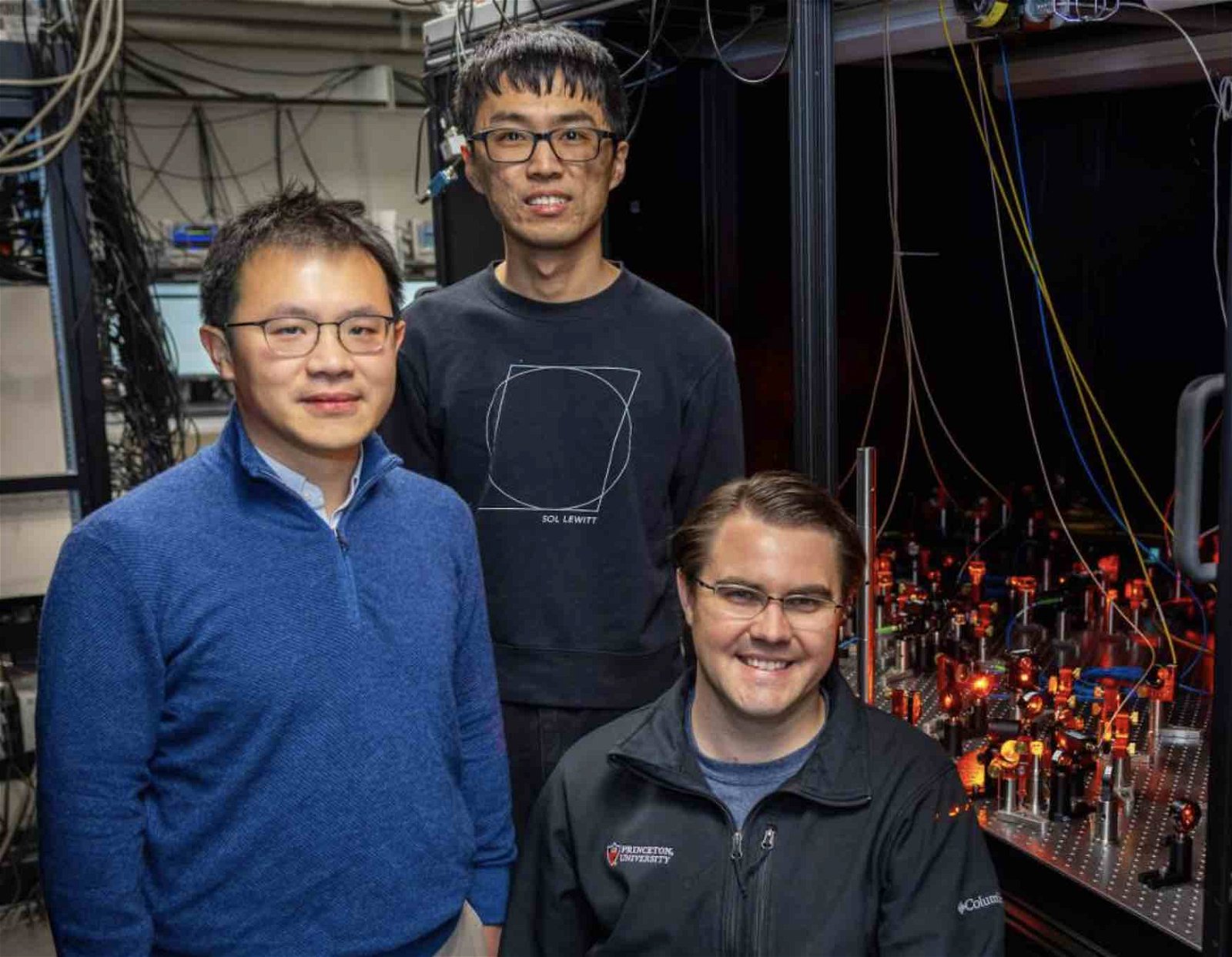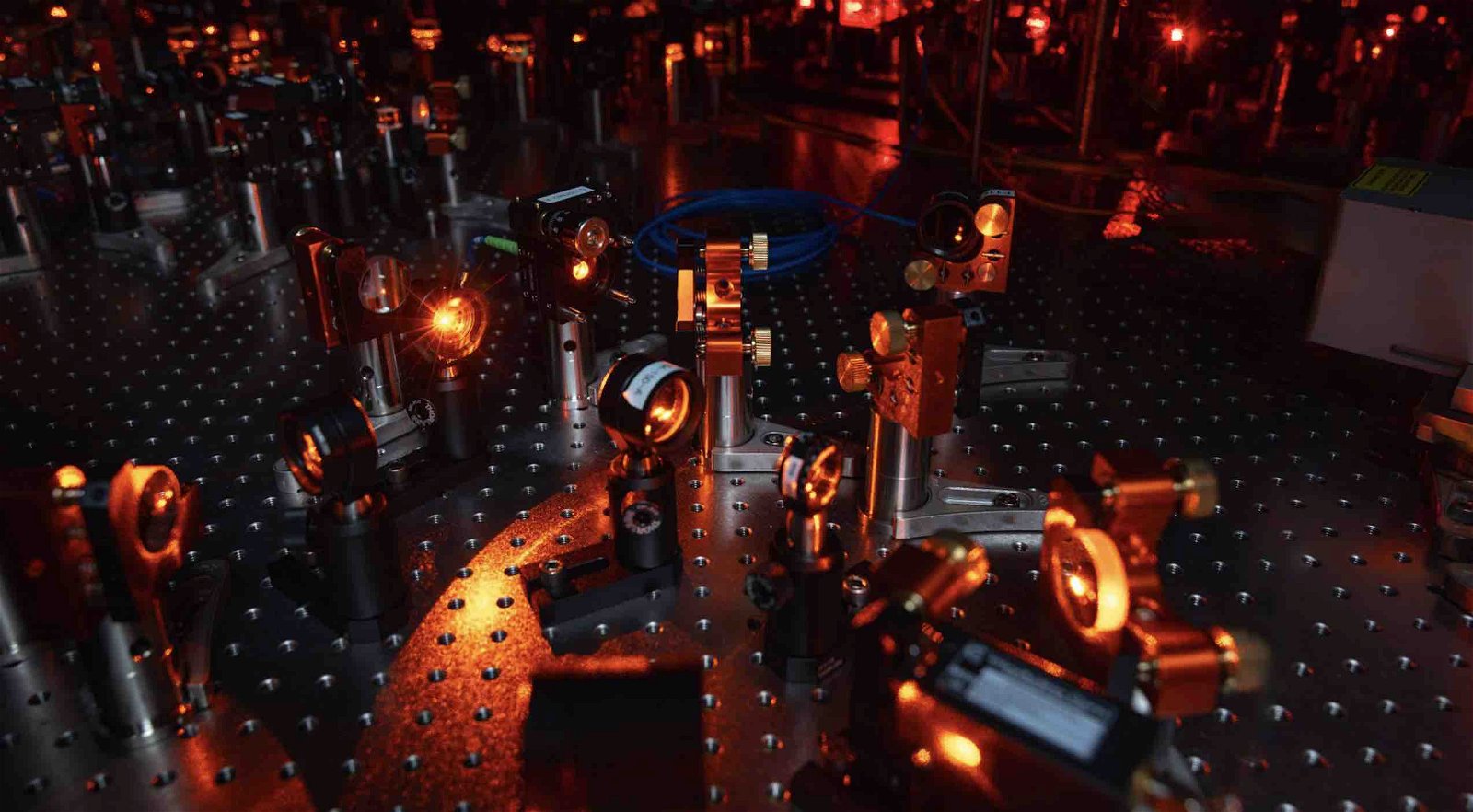Physicists at Princeton University report the successful on-demand entanglement of individual molecules, a significant milestone that they say leverages quantum mechanics to achieve these unusual states, according to new research.
Quantum entanglement remains one of the great enigmas in contemporary physics. Essentially, the phenomenon entails particles that are bound together in such a manner that any alteration in the quantum state of one particle instantaneously influences its entangled counterpart.
Remarkably, this connection persists even over vast distances, an effect initially labeled as “spooky action at a distance” following its introduction in a seminal 1935 paper by Albert Einstein, Boris Podolsky, and Nathan Rosen.
While remaining mysterious, recent years have seen substantial progress in unraveling the mysteries of entanglement, with the additional promise for its practical application in diverse fields such as quantum computing, cryptography, and communication technology.
Now, the Princeton team’s recent success can be counted among these developments, in the application of quantum entanglement toward producing beneficial future technologies. The team’s work was recently described in a paper that appeared in the journal Science.
Lawrence Cheuk, assistant professor of physics at Princeton and the paper’s senior author, says the achievement helps to pave the way toward the construction of quantum computers and related technologies, which will inevitably overtake their classical counterparts in speed and efficiency in the coming years.
Significantly, the new research also achieves “quantum advantage,” whereby quantum bits, or qubits, can simultaneously exist in multiple states, unlike classical binary computer bits which are limited to assuming values of either 0 or 1.
“This is a breakthrough in the world of molecules because of the fundamental importance of quantum entanglement,” Cheuk said in a statement.
“But it is also a breakthrough for practical applications because entangled molecules can be the building blocks for many future applications,” Cheuk added.


Although entanglement is a core component of quantum mechanics, mastering its control for use in practical applications has remained elusive. Several technologies have been put forward as potential paths toward the creation of quantum computation devices, although no single solution has arisen, and researchers may ultimately be faced with utilizing different approaches respective to the various kinds of systems that are created.
In their recent research, Cheuk and the Princeton team succeeded in what they say is the first controlled entanglement of molecules, an achievement that was once considered too complex based on the quantum degrees of freedom and interactions that molecules possess. However, this quantum “flexibility” also makes molecules ideal for applications like quantum information processing, as well as the simulation of complex materials, when compared with alternatives like atoms.
Yukai Lu, a graduate student and co-author of the new paper, says the results of the team’s research reveal novel ways of storing and processing quantum information.
“For example, a molecule can vibrate and rotate in multiple modes,” Lu explains, which means that researchers “can use two of these modes to encode a qubit.”
To overcome the difficulty presented by attempting to control the complex behavior of molecules, Cheuk and the team used a method of picking up individual molecules with a tightly focused array of lasers, in a system appropriately known as a “tweezer array.”
Cheuk calls the utilization of molecules for quantum science “a new frontier”, adding that the team’s ability to showcase entanglement essentially on-demand represents a significant step toward eventually demonstrating that molecules could be used in practical systems for the application of quantum science.
“Our results demonstrate the key building blocks needed for quantum applications and may advance quantum-enhanced fundamental physics tests that use trapped molecules,” the team writes in their recent paper.
Notably, similar results were described in an entirely separate study, led by Harvard University researchers John Doyle and Kang-Kuen Ni, along with Massachusetts Institute of Technology researcher Wolfgang Ketterle, which was published in the same issue of Science.
For Cheuk, the similarity of the two papers is only further confirmation that the “tweezer array” approach boasts significant potential for quantum science applications.
“The fact that they got the same results verify the reliability of our results,” Cheuk said.
Cheuk, Lu, and the Princeton team’s paper, “On-demand entanglement of molecules in a reconfigurable optical tweezer array,” appeared in Science on December 7, 2023.
Micah Hanks is the Editor-in-Chief and Co-Founder of The Debrief. He can be reached by email at micah@thedebrief.org. Follow his work at micahhanks.com and on X: @MicahHanks.

